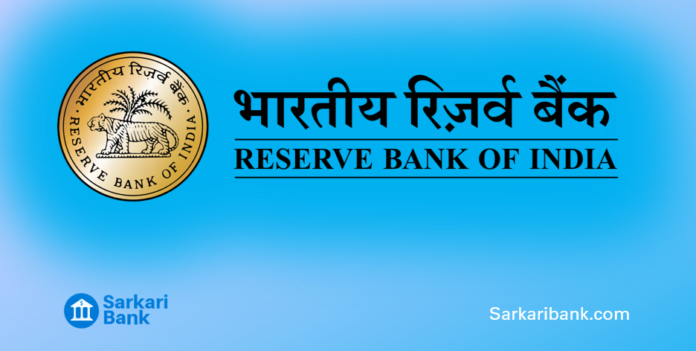Reserve Bank of India(RBI): भारतीय रिज़र्व बैंक
Establish: 1st April 1935
Nationalize: 1st Jan 1949 (According to Act 1948) Reserve Bank of India
Headquarter: Mumbai
Paid-up Capital: 5cr
RBI 1st Governor: O. Smith
1st Indian Governor: C D Deshmukh Reserve Bank of India
Financial Year: 1st July to 31st June
Minimum Reserve System: 200cr = 115cr (Gold) + 85cr (Foreign Currency)
The Reserve Bank of India, often referred to as the RBI, holds a prominent place in India’s financial history. Established on April 1, 1935, under the RBI Act, it was nationalized in 1949. Its primary mission is to oversee India’s monetary policy, regulate the country’s banking sector, and manage foreign exchange reserves. Over the years, the RBI has played a pivotal role in fostering economic stability and development.
The RBI’s journey began with Sir Osborne Smith as its first Governor, and it has been guided by illustrious individuals like C. D. Deshmukh and Benegal Rama Rau, who made significant contributions to India’s financial system. It has witnessed various phases and transformations, adapting to the ever-changing economic landscape. The RBI has been instrumental in introducing key financial reforms, such as the nationalization of banks in 1969 and the introduction of the Indian Financial Code.
In recent years, the RBI has been at the forefront of digital transformation, emphasizing the promotion of a cashless economy and ensuring the security of digital transactions. Its role during the COVID-19 pandemic as a stabilizing force in the financial sector has been crucial, with measures like loan moratoriums and liquidity support.
- In 1926 “John Hilton Young Commission” recommended to the government to establish a central bank for India. Reserve Bank of India
- John Hilton Young Commission is also known as “Royal Commission” on Indian currency and finance.
- In 1934 RBI (Reserve Bank of India) Act was passed. reserve bank of India
Board of Director of RBI: Reserve Bank of India
Total Member: 21 Reserve Bank of India
Governor: 1
Deputy Governor: 4 (2 deputy governor appointed by RBI, 1 Deputy governor by the government and 1 Deputy governor is an officer of Commercial Bank)
Director: 4 (Head of a local/zone of RBI)
Director: 10 (Experts & Different Fields)
Government Employee: 2 (Generally, 1 Secretory of Finance Minister)
The function of RBI:
- Prices stability in credit control through monetary policy
- As currency authority
- Regular and supervisory function
- Bankers to the bank
- Bankers to the government
- Foreign exchange manager
- OMO (Open Market Operation)
RBI Policy:
Financial Inclusion, KYC-Norms, Micro-Finance, Banking Oman cements, NPA, CAR, BASEL-Norms, Bank Assurance, Negotiable Instrument Act., Bank Customer Relationship etc.
There are five regularizes bodies in India: Reserve Bank of India
- FMC – Forward Market Commission – Commodity Market
- SEBI – Securities and Exchange Board of India – Capital market regulator
- IRDA – Insurance Regulatory and Development Authority – Insurance Regulator
- PFRDA – Pension Fund Regulatory and Development Authority – Pension Regulator
- Money Market Regulator
There are four Printing Press(notes) in the country: RBI
- Nasik (Maharashtra) – Currency note press, India Security Press
- Devas (Madhya Pradesh) – Banknote press
- Mysore (Karnataka) – Currency note press
- Salboni (West Bengal) – Currency note press
- Security Paper Mill: Hoshangabad (Madhya Pradesh)
- Security Printing Press: Hyderabad (Andhra Pradesh)
Local Board of RBI:
- Northern Zone: Delhi
- Southern Zone: Chennai
- Eastern Zone: West Bengal (Kolkata)
- Western Zone: Mumbai
- Total Regional Office: 19
- Total Sub Regional Office: 09
Note:
- RBI held 6 meeting in a year. There should be held 1 meeting in 3 months to review of monetary policy.
- Rs 2 to 10000 notes are issued by RBI and Rs. 1-rupee note is issued by Finance Minister
- The denomination of note is written in 15 languages.
In a nutshell, the Reserve Bank of India has a rich and dynamic history, shaping the nation’s economy and financial system. From its inception in 1935 to its significant role in today’s digital age, the RBI continues to be a pillar of strength, fostering economic stability and progress. Its journey reflects the evolution of India’s financial sector, and its legacy continues to influence the nation’s economic future.






